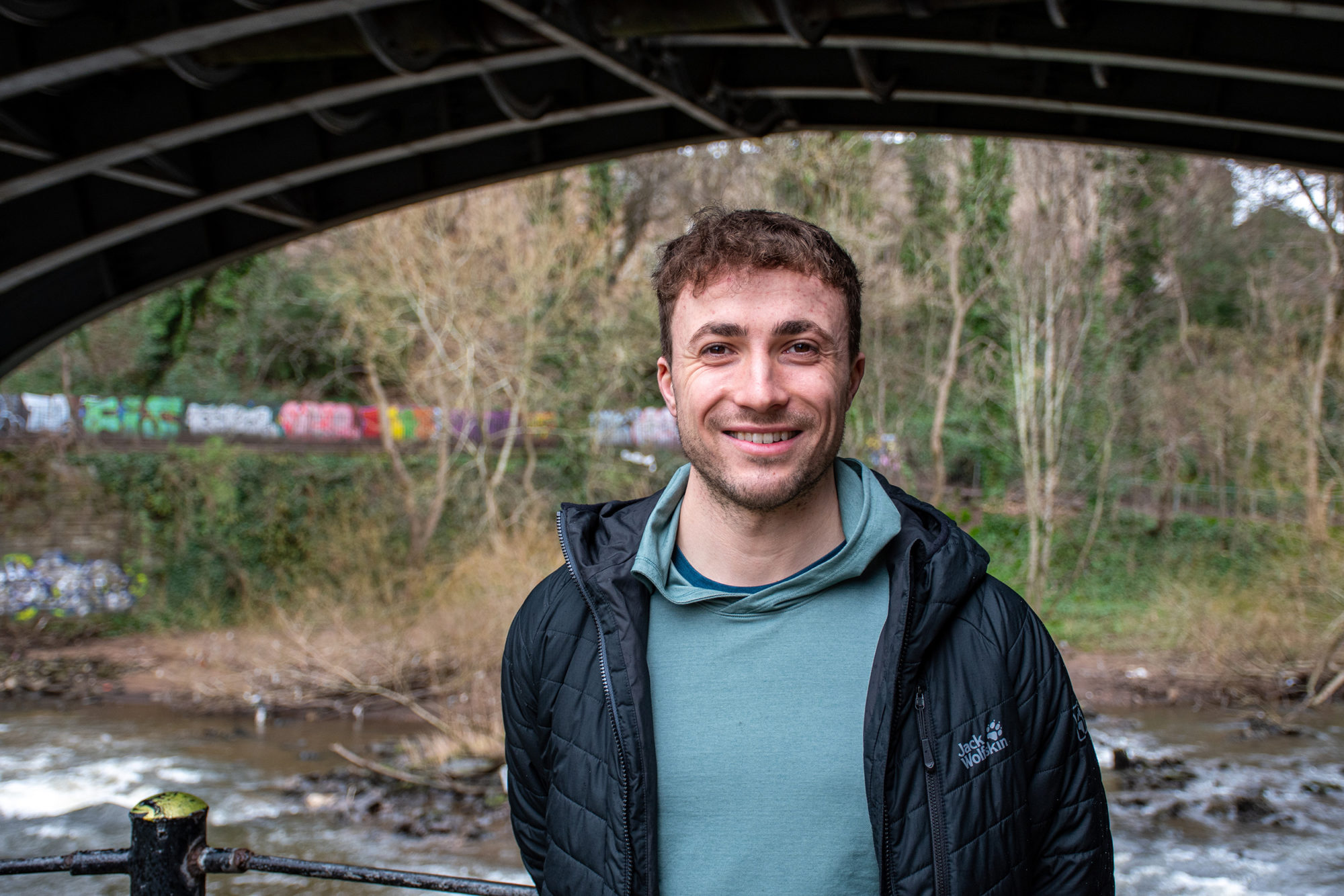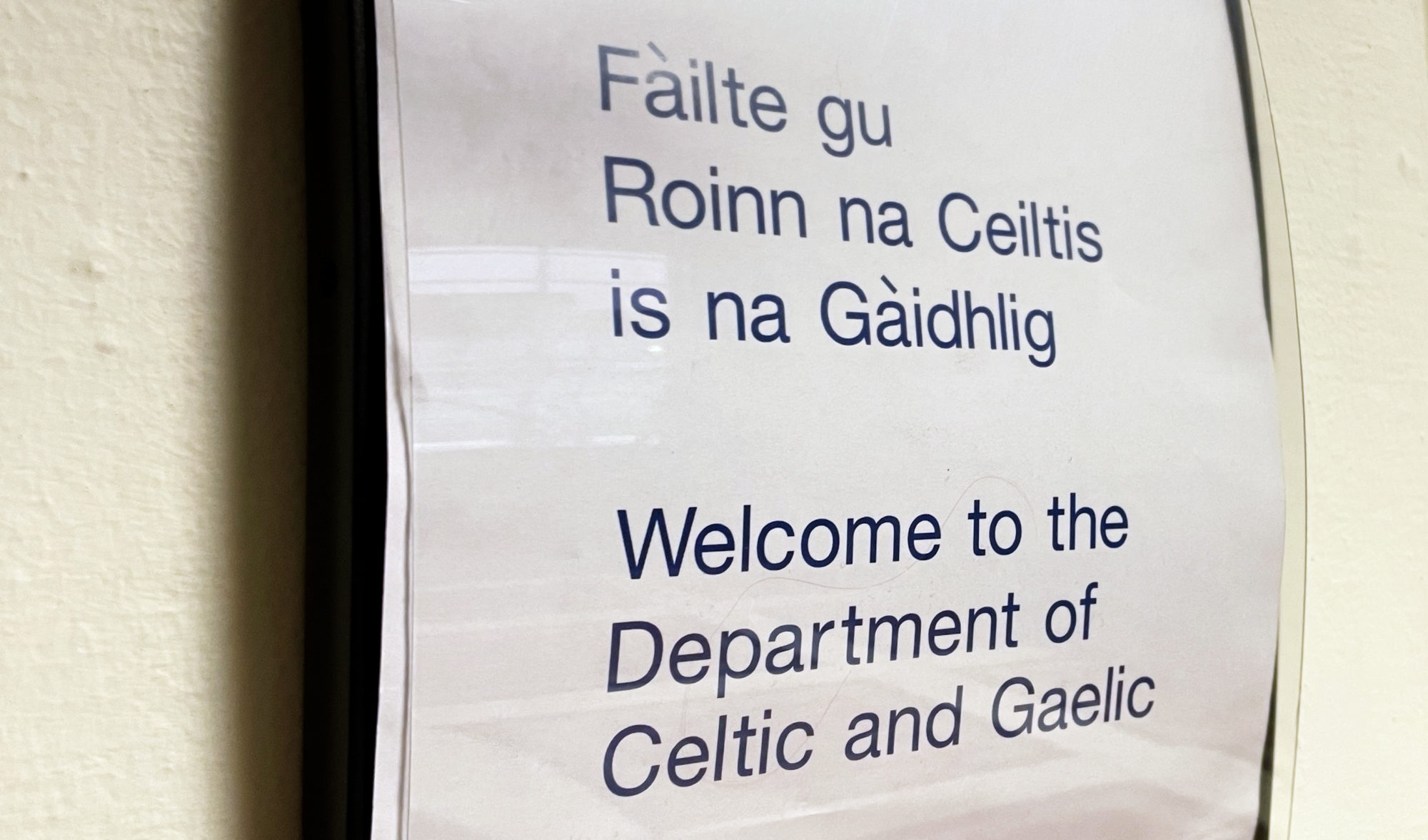It's nonnegotiable
The tradition of Scottish Gaelic: Keeping the language alive
Calum Ferguson felt his Gaelic slipping once he left school.
Born in Inverness, Scotland, Ferguson’s ancestry was intertwined with the language — his full Gaelic name being Calum McFhearghais — though his parents didn’t know it very well. They wanted their son to keep the tradition alive with their bloodline, so they sent him to a Gaelic school.

But Ferguson said Gaelic isn’t spoken very casually — outside of the classroom and workplace, it starts to fade without regular practice. So, he’s working to ingrain the language into his everyday life and share it with those around him.
“When people think of Scottish culture, they think of Gaelic culture.”
***
Gaelic is one of Scotland’s traditional languages that developed from its Irish counterpart over 1500 years ago. At the time, it was the most widely spoken language throughout the entire country, though it primarily took hold in the northwest — the home of Inverness.
The Highland Clearances in the 18th century forced the people out of their homes in the highlands — the country’s north — as a result of English rule. As the people dispersed, so did the language. Additionally, a law was enacted in the 18th century that banned use of the language.
As of the 2011 national Census, only 0.5% of adults speak the language regularly at home. In the Highlands, where Inverness is located, only 5.4% of people speak Gaelic — which includes Ferguson.
He lives in Glasgow now, though, where Gaelic is even less common.
Today, Gaelic medium schools — education programs that are taught through the Gaelic language — are popping up throughout the country outside of the Highlands as a part of a revitalization of the language.
The Glasgow Gaelic School opened in 2006, and Ferguson said it has a five-year waitlist to attend. A new Gaelic medium school recently opened in Edinburgh as well in 2013. Sixty primary schools now make Gaelic education available to almost half of Scottish communities.
Kathleen Reddy, a lecturer in Celtic and Gaelic languages at the University of Glasgow, said parents send their children to Gaelic medium schools to offer them a chance to learn their own home language or give them a chance to carry on a tradition they may have missed out on. For others, Reddy said there’s a benefit of simply learning a second language.
“There’s usually more demand for spaces than there are children starting school,” she said.

At the university level, Reddy said students come in with varying degrees of experience with Gaelic. She teaches a Gaelic immersion program that is meant for people looking to be fluent in the language. Through the program, students have the opportunity to travel to the Highlands where they’ll spend several months speaking the language in their everyday lives.
She said it may be because the “oppressive” mindset that Gaelic isn’t worth learning in Scottish society has mostly vanished.
Ferguson said Gaelic medium schools are a “massive step in the right direction,” though he frets that the underpinnings of Gaelic aren’t being taught.
“A language is words at the end of the day, and it’s the principles and values and sense of community that make it important.”
Education is one thing. Taking it beyond the classroom can prove difficult.
Reddy said the growing population of Gaelic medium schools and the mounting waitlist to attend the schools is a “good thing” but it’s not “the silver bullet” to fully revitalize the language. Instead, she said it must be passed down intergenerationally.
Reddy, who grew up in Canada where there is a small population of Scottish Gaelic speakers, said she’s sad she didn’t grow up speaking the language but is glad to share it with others who are eager to learn.
“It’s not just a language… The language is just a bigger thing in the culture, the history, the music, the stories, the songs. It all comes together,” she said. “The opportunity to pass on what I learn to others, it’s really quite a privilege.”
For Ferguson, it’s a chance to keep a part of his own ancestry alive after it came close to fading away from himself. In 2016, Ferguson, who is a professional football player, said an injury gave him the opportunity to brush up on his skills.
Since the pandemic, he tries to share his passion for Gaelic with every person he meets.
Ferguson merged his two loves into one through FC Sonas in order to make Gaelic “cool” again. FC Sonas is a Scottish Gaelic football service that began in 2020. Its main goal is to connect people with football and Gaelic and help them grow in both through a “fun, natural” setting.
“A lot of the stigma that Gaelic receives is that it’s an old language. It’s a dead language. It’s not cool. It’s not trendy… football makes it cool.”
Ferguson said he’s grown a “wee bit of a reputation” for trying to convert his team members and friends to Gaelic…and someday, his own descendants. He is set on ensuring his future children are fluent.
“At the end of the day, if you don’t pass it on, it finishes with you. If you’re lucky enough to have a knowledge of a language, it’s something that I’d like to use in a family environment,” he said. “Whatever unfortunate woman finds herself in that situation, it’s a nonnegotiable for me.”